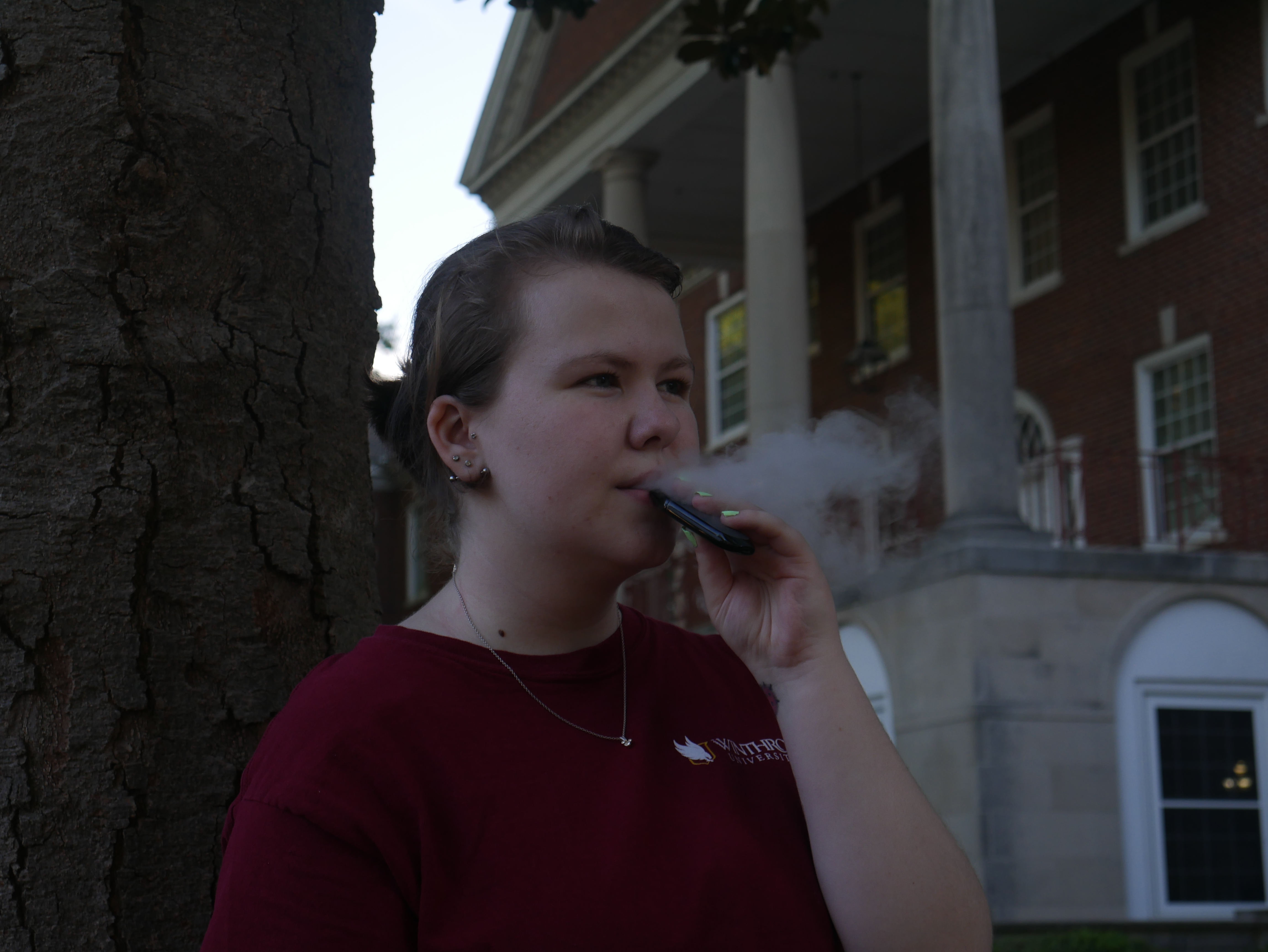Cigarettes and nicotine have always had a strange way of infiltrating our society and wreaking havoc. And now the anti-smoking campaign of our childhoods has been disregarded for a small little electronic vape—a device that was made for the purpose of being the “healthier alternative.” Just a little heads up, it definitely isn’t.
Why is it that people who grew up knowing the cost of smoking cigarettes, having seen the repercussions through adults and relatives, decidedly ignored the warning signs before they even reached 18 years old? I can always remember the first time that I saw a Juul; I was hanging out with my friends and somebody pulled it out, making the promise that it was “totally safe” and nothing like cigarettes because it didn’t contain tobacco.
This led me to question why people really thought cigarettes were unhealthy. Was it really the tobacco that repulsed people? It definitely couldn’t have been all of the chemicals that pose a risk, and those same, dangerous chemicals definitely aren’t also found in the “safer” e-cigarettes. Vaping poses similar risks as smoking cigarettes, even without having overwhelming amounts of tobacco in their products.
Although no long–term studies have been done, as these e-cigarettes have only existed since approximately 2003 and weren’t normalized until the 2010s, there are much more recent accounts of what damage these devices can do to people.
As of Sept. 19, the Center for Disease Control and Prevention has made account of 530 cases of lung injury and 7 deaths related to vaping across the United States. Since the CDC has made this statement, state investigators have begun to look back on other, similar deaths to see if they were caused by vaping.
By marketing their product as “safe”, e-cigarette companies such as Juul or SMOK have been able to put nicotine products in the hands of the younger generation, the one that was supposed to eradicate smoking. The high demand for these products was aided by the companies’ use of fruity flavors that were enticing to teenagers.
Cigarettes are no longer marketable to the public. There have been too many anti-smoking campaigns that displayed the health risks of smoking tobacco cigarettes, risks that stay with someone for their entire life. This is where the e-cigarette companies stepped in and took over the market.
In 2017, the CDC said that only 14% of adults were smoking cigarettes. Compare this to a 2018 survey conducted by the National Institution of Drug Abuse that said 42.5% of high school-aged kids had admitted to smoking an e-cigarette at some point.
These rates have continuously grown over the past 5 years, and nothing is going to stop them unless punitive action is taken against the large corporations that are risking the health of our younger generation for their profit.
The Trump administration is pushing this initiative by placing a ban on the sale of flavored e-cigarettes. Since doing so, the CEO of the Juul company, Kevin Burns, has stepped down from his position and has been replaced by K.C. Crosthwaite, a former chief growth officer for a company that produces Marlboro cigarettes. Juul has also made the initiative to remove all print, digital and TV advertising and will comply wholeheartedly on any anti-vaping legislation that is passed in the future.
Photo: Mason Foster/ The Johnsonian




